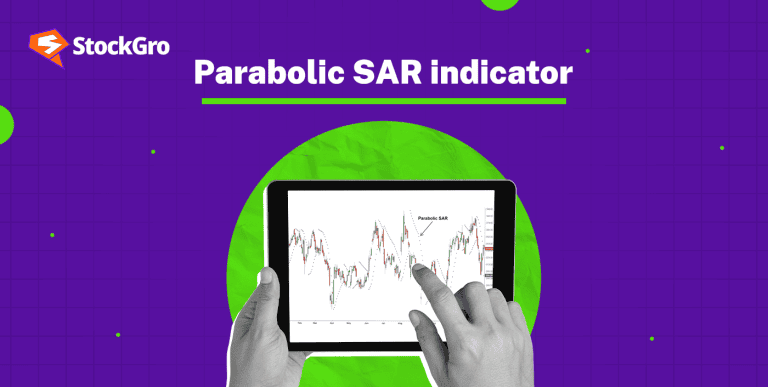
How can one really gauge the performance of an investing portfolio? Is the focus on the total returns or on how effectively the portfolio performed over time? Analysing portfolio performance is not as easy as it might seem, especially in view of financial flows including withdrawals or deposits.
Here is when exact performance metrics, like the time weighted rate of return (TWRR), become absolutely essential. Unlike more basic approaches, TWRR is intended to completely remove the distortions brought about by cash flows, offering a clear view of how a portfolio has done just based on investing strategy.
The definition of TWRR, the reasons for its relevance for investors, and its operation will be discussed in this article.
You may also like: Mastering mutual fund evaluation: 5 Key metrics you need to know
What is the time weighted rate of return?
The time weighted rate of return method gauges the performance of an investment portfolio by neutralising the impact of capital flows such as deposits or withdrawals. It just considers the returns the investments in the portfolio produce, independent of the timing or amount of capital added or deleted.
Since TWRR provides an unbiased evaluation of an investment manager’s performance free from investor behaviour, it is used extensively. Separating the effect of investment decisions and market movements helps to better depict over time how successfully a portfolio is managed.
Key features of TWRR
- Tracks performance over time: TWRR evaluates the portfolio’s growth for specific periods, making it ideal for long-term performance analysis.
- Neutralises cash flow impact: It eliminates distortions caused by external cash inflows and outflows, ensuring that results reflect only the portfolio’s true performance.
Also read: What is the annualised rate of return? Learn the formula & calculation
How is TWRR calculated?
Methodical estimation of the time weighted rate of return ensures that events influencing cash flow, such as withdrawals or deposits, do not affect the performance of the portfolio. This works like this:
Step-by-step explanation
- Break down time periods:
Separate the portfolio into several periods depending on cash flow events. Every deposit or withdrawal signals the beginning of a fresh term.
- Calculate period returns:
For each period, compute the return using the TWRR formula:
Period Return = Ending Value − Starting ValueStarting Value
- Chain the returns:
Multiply the returns for each period to get the overall TWRR:
TWRR = 1+ Period Return11+ Period Return2 …1+ Period Returnn – 1
Example:
Imagine a portfolio with the following details:
- Starting value: ₹1,00,000
- Period 1: Ending value ₹1,10,000 (no cash flow)
- Period 2: ₹10,000 deposited; revised starting value ₹1,20,000; final value ₹1,30,000.
Step 1: Period 1 return = (₹1,10,000 – ₹1,00,000) / ₹1,00,000 = 10%
Step 2: Period 2 return = (₹1,30,000 – ₹1,20,000) / ₹1,20,000 = 8.33%
Step 3: TWRR = (1 + 0.10) × (1 + 0.0833) – 1 = 0.1916 or 19.16%
This example shows how TWRR clearly shows the returns produced only by the investing strategy by separating portfolio performance from the effect of cash flows. TWRR guarantees that performance reviews stay objective and constant by concentrating just on the capacity of the portfolio to expand over time, thus providing a consistent benchmark for comparing investment managers or strategies.
Why is TWRR important?
- Objectivity and accuracy: TWRR provides an unbiased measure of a portfolio’s performance by neutralising the impact of external cash flows, such as deposits or withdrawals. This guarantees that the returns show the actual success of the investment plan instead of the cash movement timing.
- Comparison across investment strategies: Standardising the assessment procedure helps TWRR let investors level-play between several fund managers and investment approaches. Making wise judgements and choosing the top-notch funds depend on this comparability.
- Consistency over time: TWRR offers a consistent method for tracking performance over multiple periods. Unlike other return measures, TWRR’s calculation method remains unaffected by the timing and size of cash flows, providing a stable basis for evaluating performance trends.
- Fair performance attribution: For investment professionals, TWRR is essential for attributing performance to specific periods and decisions. It enables a fair assessment of how well a portfolio manager has executed their strategy, without being skewed by the investor’s actions.
- Enhancing transparency: TWRR advances open reporting of investment results. Independent of their contributions and withdrawals, investors may observe how their portfolio is performing, which helps them to better grasp the real growth of their investments.
- Decision-making tool: TWRR helps advisers and investors make more informed judgements on strategy changes and portfolio tweaks. Knowing the actual performance of investments helps one to find areas of strength and weakness and modify their strategy.
Limitations of TWRR
- Complexity: TWRR calculations can be complex and time-consuming, especially for portfolios with frequent cash flows. It requires detailed data for each transaction, which may be difficult to track accurately over time. This can make it harder for individual investors to calculate on their own without using specialised software or platforms.
- Assumes reinvestment: TWRR assumes that all cash flows, such as dividends or additional investments, are reinvested at the portfolio’s return rate. Actually, this might not always be the case since investors may reinvest at different rates or dates, resulting in a little mismatch between the computed TWRR and real returns.
- Not always investor-centric: Although TWRR helps evaluate the performance of a fund manager, it may not always fairly represent the influence of timing or cash flow choices made by an individual investor. It centres on the general performance of the portfolio, which could not adequately represent how particular actions, such as fund additions or withdrawals, affect an investor’s returns.
Further reading: CAGR (compound Annual Growth Rate) Vs Absolute Returns
Bottomline
Independent of investor cash flows, a vital statistic for evaluating portfolio performance is time-weighted rate of return. Eliminating the effect of withdrawals and deposits helps one to clearly see over time the performance of a portfolio or fund manager. Knowing how TWRR is computed and its significance will enable investors to choose fund managers and review portfolios with greater knowledge.
Building a strong investment plan and generating long-term wealth ultimately depend on using correct performance measures like TWRR. It helps investors make decisions based on reliable data, ensuring a clearer path toward their financial goals.
FAQs
Why is time-weighted return important?
Since it neutralises the effect of outside cash movements like deposits or withdrawals, the time weighted rate of return (TWRR) is vital as it offers an objective assessment of the performance of a portfolio. This guarantees that the returns fairly represent the real effectiveness of the investment strategy, therefore enabling correct comparisons between many investment managers and strategies and supporting informed decision-making and open performance reporting.
What is the time-weighted rate of return also known as?
TWRR is also referred to as geometric mean return. This statistic serves to adjust for the cash flow that takes place outside, that is, deposits or withdrawals and thus helps in the evaluation of the performance of the investment portfolio. Because it restores a single performance measure of a portfolio to an equitable AGW basis by concentrating only on the returns that an investment generates, TWRR is a measure which is equally useful in investment evaluation and comparison.
What is the difference between TWRR and XIRR?
With regard to TWRR, this is only concerned with investment return and as such obliterates any cash flow effects with the aim of gauging the performance of a portfolio. In comparison, XIRR offers a more customised IRR that is based on the amount and time of the cash inflows and outflows. For comparing investment managers, TWRR is best; for individual investors evaluating their own cash flow effects, XIRR is more appropriate.
What is the difference between TWR and IRR?
Although the modified time weighted rate of return pertains to the investment returns, views investment cash flows as neutral during the evaluation. Conversely, the Internal Rate of Return (IRR) is a measurement of return considering the timing and cash flow size. While evaluating the profitability of particular projects or investments, IRR is better suitable; for comparing investment managers, TWRR is best.
Is time-weighted return same as CAGR?
The compound annual growth rate (CAGR) does not match the time weighted rate of return. Focussing just on investment returns, TWRR gauges portfolio performance by neutralising cash flow implications. On the other hand, CAGR calculates, presuming a constant rate of growth, the annual rise rate of an investment over a certain period. Though both measures evaluate performance, they have different uses and offer different insights.

